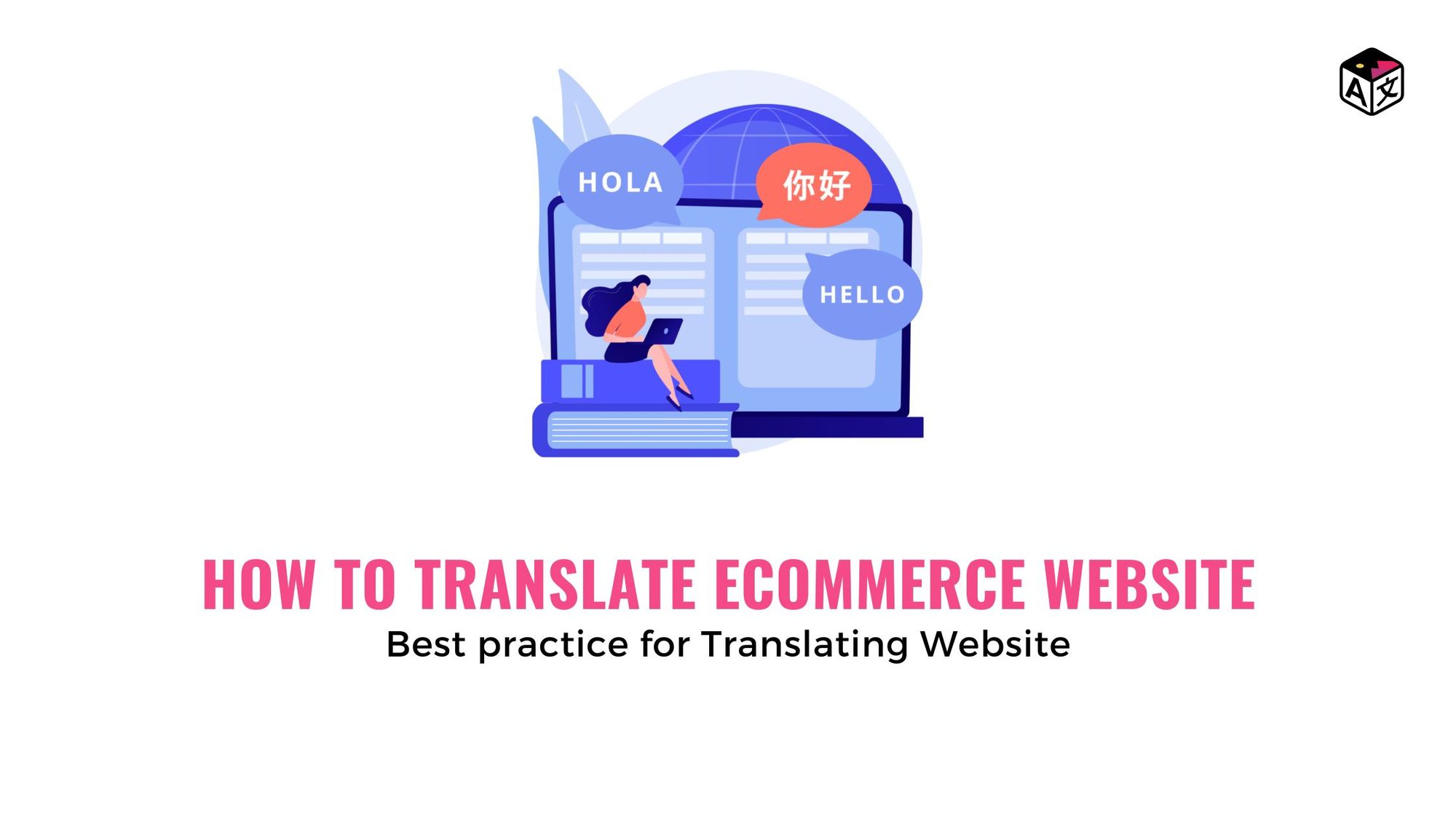How to Translate Ecommerce Website | How to Create Multilingual Ecommerce Website

Many people around the globe are now turning to buy products online. "With 60% of the global population having access to the internet, more than half of the world can use the internet to purchase goods" according to statistics by My Credit Summit
The consumer and Market data company Statista predicts that worldwide Ecommerce sales will reach $6.4 trillion USD by 2024. In which a significant number of sales will come from countries where English is not the primary language. E.g. China, Japan, Germany. Targeting products and services to these potential customers should be on your list if you want to make your business rise.
By enabling multiple languages on your on you Ecommerce website, online sellers can make their stores more engaging to customers from different countries. A study from Octopus Translation suggests that "55% of customers around the world prefer their mother language for their online purchase".
All the reasons to translate an ecommerce website mentioned above it makes perfect sense to create a Multilingual Ecommerce website. In this article, we’ll guide you through the benefits of translating your Ecommerce website, the language you should translate your website, and give some additional tips on how to translate product pages.
What are the Benefits of translating an Ecommerce website?
The principal benefit of Ecommerce translation is that you could cater to more customers in more markets, which in turn generates more revenues for your business.
Besides, there are a few more benefits of translating websites.
>Have a better connection with your customers.
>Gain better and wider online visibility with multilingual SEO.
>Cost-effective promotion.
>Cultivate trust among your customers.
>Differentiate / Keep up with the competition.
>Deliver the best customer shopping experience.
Now that you know the benefits of translating a website, let us check out what parts of your website you should translate.
What parts should you translate on an Ecommerce website?
There’s a lot happening on an Ecommerce website, there’s a lot of data to read, images, and offers to look at. So it is obvious to ask the question of what exactly we should translate on the website.
Well here are a few parts that you must translate for a multilingual Ecommerce website.
>Website’s home page:
The home page is what greets your visitors, and it is the one where the visitor is exposed to all the special offers that the website has at that certain point in time. A localized home page can help you to luke the customer into the exciting offers and towards a product page.
>Product Page:
The product page is where the customer will make a decision on whether to make a purchase or not. Thus it is important to Translate Product Descriptions, Translate Product Images, and Product Specifications.
>Terms & Conditions / Privacy Policy:
The website's teams & conditions and privacy policies are crucial elements where the slightest misunderstanding can cost a lot either to the seller or to the customer, resulting in a bad customer experience. This is why it is essential to accurately translate T&C and the privacy policy.
>FAQ & Help Center:
A visitor or customer may have plenty of questions that they need answers to, before making a transaction. Localizing the FAQ section in their preferred language will become extremely easier for the customer to find what they are looking for.
How to decide which languages to translate for your Ecommerce website?
Before you make the move to translate your website, it is essential to decide in what languages you want your website to be translated. This is especially important when you are on a tight budget and unnecessarily adding a language for an audience that your website does not cater to will not help.
To decide which countries you going to cater to, you first have to do some analysis and make sure whether there’s a market for your product, whether you require a special license or documents before you sell a product in a specific country, import tax/import duties, what is the popularity of online shopping in these countries, so on and so forth.
You also need to check your website analytics to make sure that you have a significant amount of traffic for the country you are targeting, and if not then check out how much is the current visitor rate and then check whether your multilingual website is helping you or not.
According to these analyses then make a decision to choose the languages to go with your multilingual website.
How to translate a website into multiple languages?
There are different options to go with translating a website. You will have to take your entire website's content and put that into a file.
Automated Translators
This is for merchants who are on a really tight budget and absolutely cannot afford to hire a translator or translation agency. Machine translation systems like Google Translate can help you in translating your website’s content easily. Machine translation has improved a lot with its accuracy over the years, but still, it is prone to make mistakes and may require a translator for quality checks. If the translations are inaccurate it might ruin the customer experience.
Freelance Translators
For retailers who can spend more on translation, a freelance translator can be a great option as they can translate a website with great accuracy. Before you choose a freelancer for the translation of a website do check their language fluency. You also might have to consider that a translator does not necessarily have an SEO skillset so the translated content should be taken to an SEO expert.
Translation Agency
If your website is big then hiring a translation agency does make sense. A translation agency has a lot of translators and SEO experts in-house that can translate a massive amount of website content in no time.
Website Localization Tool
There are also some website localization tools such as Weglot, Localize, and Bablic that can help you translate a website. We have made a comprehensive article about the top 5 website localization tools that might help you in selecting the perfect option.
These are the options you can go with for translating Ecommerce websites into different languages.
What about translating website images?
All this while we have talked about translating the content on the website and making it multilingual. But what about translating the images? As images are also an important part of the website and the text over it grabs the attention of lots of visitors.
The images on an Ecommerce website can be of a certain offer that the website has, or they can simply be product images that need a translation. You can create product images for every language that you cater to, but this will take a up lot of your resources such as time, and money.
How about you can translate product image in under 30 seconds into multiple languages
Now you can with ImageTranslate.
On ImageTranslate you can translate image text and recreate the same image into different languages in 40 seconds and you can generate images in 40+ languages.
Here’s an example of a product image translated from one language to another.


You can also translate infographics, translate advertisements, and so on.
The best part is you can edit the product images and make them more accurate if needed with the ImageTranslate Type-Setting feature.

You can also opt for ImageTranslate API which can translate all the images on your website for the backend.
Conclusion:
If you are looking forward to expanding your business into other countries, then the translation of your website should be one of the foundational steps. A multilingual website can help you spread your roots in new markets and takes you one step closer to earning more revenues and business expansion. You can translate the Shopify Website or a stand-alone online store of your own to improve customer experience.
Check out www.imagetranslate.com & translate product images for free.

